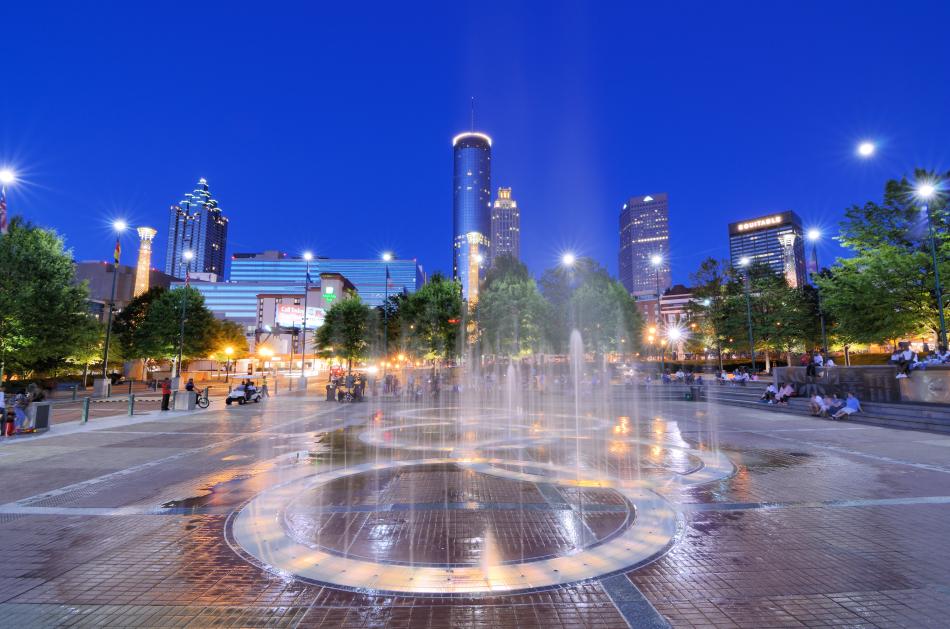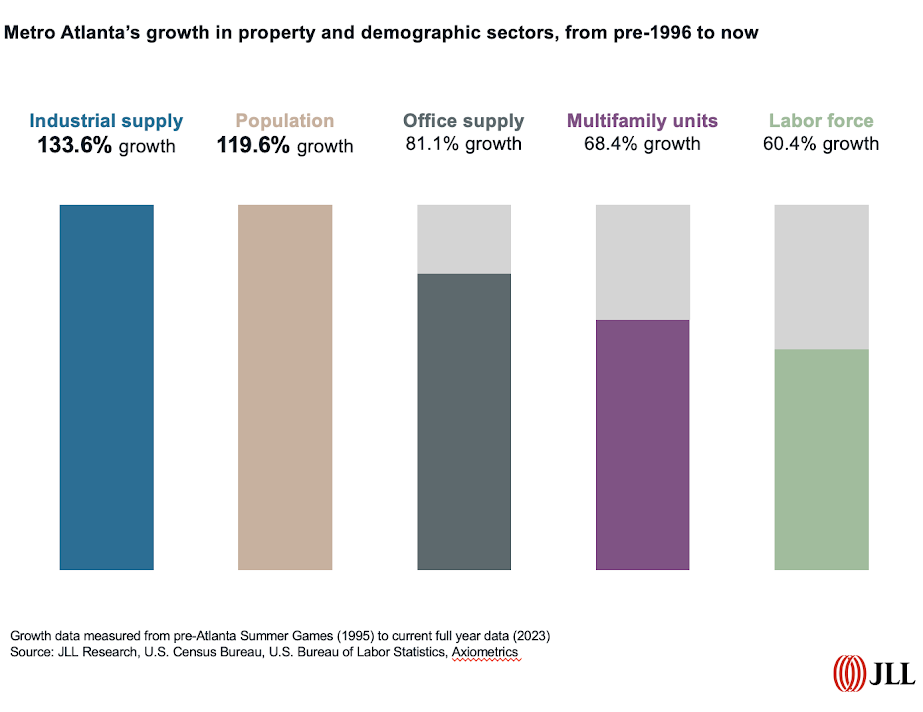Whether you were born or not, let’s envision the pre-1996 Olympics version of Atlanta:
The famous Atlanta BeltLine wasn’t even a kernel of an idea. Ponce City Market was municipal offices and a lot of dust. The architectural feat that was the Georgia Dome was shiny, new—and teal. Centennial Olympic Park was just being transformed from blighted low-rise into the communal and cultural centerpiece it remains today.
And metro Atlanta was substantially less than half the size it is right now.
That’s according to global real estate services company JLL, which has compiled an analysis contrasting the metro Atlanta of 1995—the last full year before the Centennial Olympic Games began—against 2023.
In 28 years, the city and its suburbs swelled from about the size of today’s metro Baltimore and Denver to a top-six U.S. metro with more international flare and a constellation of vibrant, suburban town centers.
“The 1996 Summer Olympics made Atlanta a world city,” writes a JLL rep, in summary. “Since then, investors, developers, and citizens alike have kept up that identity.”
Since 1995, metro Atlanta’s population has more than doubled, growing by nearly 120 percent as the labor force also ballooned by 60 percent, according to JLL’s findings.
Those statistics track with other recent population studies.
According to the latest U.S. Census estimates, metro Atlanta’s 29-county region added another 68,585 residents between 2022 and 2023, for a total of 6.3 million. That tally meant Atlanta’s metro has leapfrogged three other metros—Miami, Washington D.C., and Philadelphia, respectively—to move from ninth largest at the outset of the COVID-19 pandemic to sixth largest now, according to Census officials.
JLL’s study also found the sheer number of multifamily units, such as apartments, have shot up more than 68 percent, while the metro’s office stock is more than 80 percent larger than that of the mid-1990s.
 Centennial Olympic Park's centerpiece fountain joins many vestiges of the 1996 Games around town. Shutterstock
Centennial Olympic Park's centerpiece fountain joins many vestiges of the 1996 Games around town. Shutterstock
But the metro’s largest statistical growth came with industrial supply, such as shipping warehouses and logistics hubs. That's ballooned by nearly 134 percent since Muhammad Ali lit the Olympic Flame in Summerhill and gymnast Kerri Strug stuck that iconic landing at the Georgia Dome.
“Since 1996, Atlanta has emerged as a top 5 U.S. industrial market,” per the JLL analysis, “a very industry-diverse office market, and a desired place for people to move.”
...
Follow us on social media:
Twitter / Facebook/and now: Instagram
• Phew! Atlanta doesn't crack top 50 on 'Dirtiest Cities in America' list (Urbanize Atlanta)








